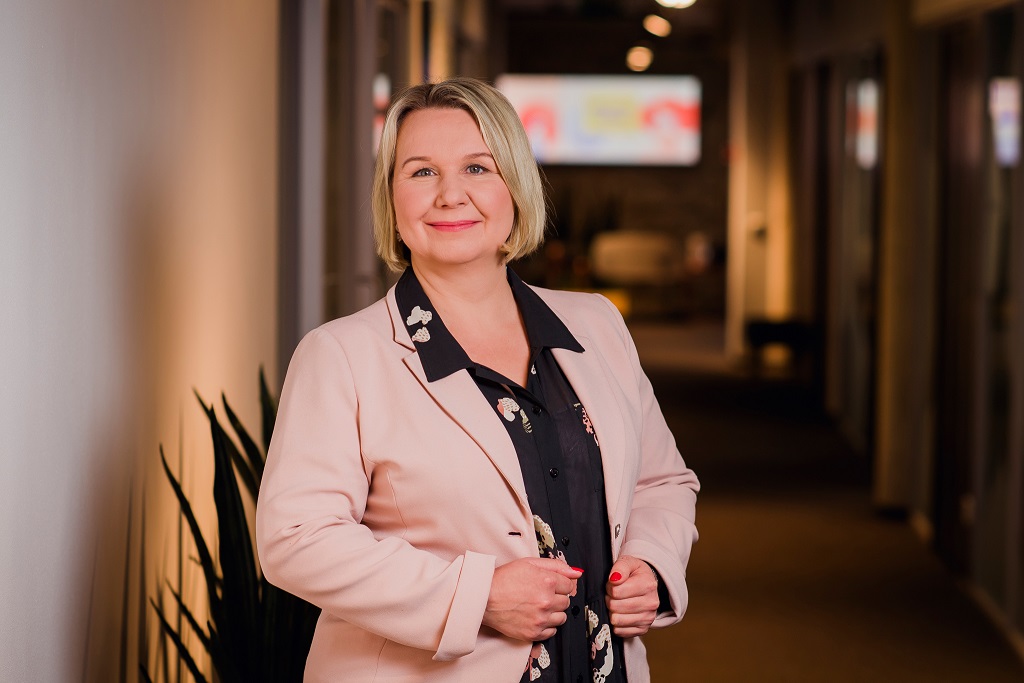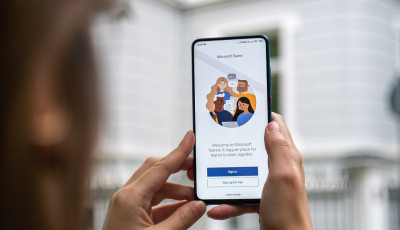Can a German company successfully collaborate with an IT partner in Estonia despite the team members never meeting in person? Helmes’ long partnership with financial services advisor Bonnfinanz convincingly shows it can.
Read our blog post about what allows our remote collaboration to thrive and tips for selecting a development partner and organizing daily work across borders.
Bonnfinanz is a German financial multiple agent that helps private individuals select insurance, loan, investment, and pension services best suited to their goals. The company currently serves 450,000 customers and employs 450 consultants across Germany.
A business with a 50-year-old history, Bonnfinanz used to be part of a multinational group until 2019, when it became an independent company under new ownership. This change necessitated developing their own IT systems in 18 months with no in-house development team.
Helmes was referred to Bonnfinanz as an experienced integration partner after it chose Aurea software as the cornerstone for integrating its systems. After successfully completing a test assignment, our collaboration took off just as the pandemic closed the borders.
An invisible data exchange layer that keeps data flowing
In essence, Bonnfinanz acts as a multiple agent for dozens of financial service providers like banks and insurance companies; the company’s consultants help the customers identify the best service for their needs and sign up for them. The process requires seamless communication between several internal and external information systems (e.g., CRM and accounting software, a commission management system, a document management system, and various partners’ information systems).
For this purpose, we’ve integrated all the systems with a middleware platform that standardizes and automates the data exchange between different systems and ensures that all information on services, customers, and their contracts is always up-to-date and accessible. The invisible but business-critical middleware solution spares a lot of manual work, including processing 250,000 paper documents each year. Unlike a development project with a fixed end date, we continue to maintain the platform and integrate new service providers as the company’s portfolio keeps expanding.
Read more about the integration project: How Helmes Helps the German Company Bonnfinanz Digitize Its Business Processes
Our process for efficient remote collaboration
Bonnfinanz and Helmes met once for a project kick-off in Tallinn before the pandemic shut down travel and have continued to work 100 percent remotely since then. However, this has not hindered our collaboration in any way. Here’s what our daily work routine involves:
- Daily core team standup meetings each morning (15 to 30 minutes) where we discuss ongoing tasks, their progress, and related questions using a Kanban board.
- A weekly team meeting (30 minutes) where we look at the tasks roadmap for the next few months, including the ones in progress, tasks specified but still pending for processing, and assignments that still need to be analyzed.
- A bi-weekly governance meeting (30 minutes) between team leads where we discuss the development process and any other development-related questions about our cooperation.
- A quarterly retrospective meeting (120 minutes) where every team member shares their feedback on the recently finished quarter, and we select 2-3 topics that we aim to improve over the next period.
- Chat and 1:1 calls when needed.
- All tasks and documentation are stored in Confluence/JIRA.
While we have no problems remotely, we are always delighted to meet in person and hopefully can do so again this autumn as travel restrictions in both countries have lifted!




A true partnership based on trust and openness
What is the secret sauce that makes people located in two different countries collaborate as one team toward joint goals? Both Bonnfinanz and Helmes share the same values that create a perfect setting for our cooperation:
Openness – Everyone can freely communicate their concerns, ask questions and get feedback. Any problems get sorted out quickly, so the team can move fast. People are not afraid to admit and take responsibility for their mistakes. As a result, we spend very little time on bureaucracy, which leads to efficiency.
Trust – There exists mutual trust credit that neither party has broken. The client trusts our expertise and judgment without expecting us to justify every decision. This trust was earned not just through references but through validating our expertise with a test assignment before the start of the project and is constantly reinforced through our daily collaboration.
Partnership – The client looks for our suggestions in the development process. Allowing your development partner to contribute input based on their experience and expertise leads to implementing better solutions compared to just having them fulfill orders without any say in the process.
What issues come up in a German-Estonian collaboration?
Culture and language
The work culture of Estonia and Germany are very similar, so you will probably not experience any intercultural differences while working on a joint project. As English is widely spoken in both countries, there is also typically no language barrier between the team members.
However, keep in mind that:
- Your project might also involve third parties. For example, integration projects like ours require communication with other service providers – in our case, the companies whose financial services are available on the Bonnfinanz platform – who might not all be willing to communicate in English. In those cases, the client has stepped in and mediated our communication with third parties during the integration process;
- Specific sectors may be heavily regulated and, as a result, specific terms may be used to orient oneself;
- The information systems are equipped with German-language user interfaces exclusively, so in addition to the English-language task specifications on which integrations are developed, online translation services are sometimes used.
E-services
In Estonia, for historical reasons, we skipped some phases in the evolution of public services and went digital from the start. As a result, we are used to e-services and conducting business online. This puts us in an excellent position to share our experiences and help companies achieve an edge through automation and digitalization.
Decision-making
Secondly, in Estonia, we are used to moving fast and making decisions quickly, perhaps sometimes even hastily. In Germany, on the other hand, it is vital to involve everyone affected by the decision in the process and reach a consensus before deciding on something. This difference between the two countries may require a bit more time but ensures everyone is on board and satisfied with the outcome.
Such cultural variation is not a problem but rather an asset that allows both sides to keep learning from each other. The most important thing is to align your core values and treat each other as equal partners, leading to natural synergy and the best solutions.
Let’s make IT happen!
Helmes has been developing custom software for customers all over Europe for more than 30 years. Our clients include fast-growing startups, multinational companies in the telecom, fintech, logistics, healthcare, and other sectors and public institutions.
Our extensive international experience has equipped us with unique insights and methods for efficient cross-border collaboration.
We’d love to hear from you if you are looking for integration, data analytics, or custom development partner.
Check out our services and drop me a line.
Get in touch




